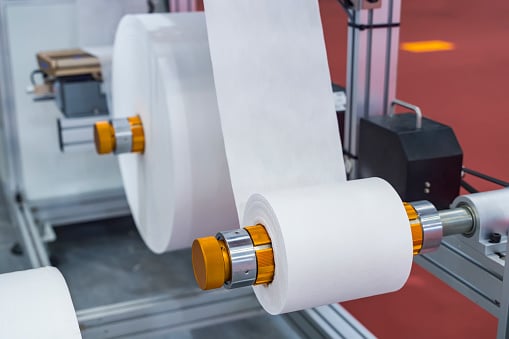Since non-woven fabrics are so popular, there is an uneven distribution of prices on the market. In order to win business, many manufacturers will offer prices that are even lower than what the entire industry can offer. Additionally, customers have more and more reasons and bargaining power, which leads to an unfavorable environment for competition. The Author of Synwin Non-wovens Manufacturer has assembled numerous elements affecting prices here in an effort to solve this unfavorable situation, with the hope that we may examine the cost of non-woven fabric with objectivity:
Factors affecting non-woven fabric prices
1. The cost of crude oil on the market for raw materials and oil
Since non woven fabric is a chemical product and uses propylene, a product used in the refining of crude oil, as a raw ingredient, the price of propylene will directly affect the cost of non woven fabric. Additionally, raw materials are broken down into authentic, second-hand, imported, and domestic, etc.
2. Manufacturer's tools and technical input
The quality of imported equipment differs from domestic equipment, and varied production methods using the same raw ingredients result in nonwoven fabrics with different uniformity, tensile strength, and surface treatments, all of which have an impact on the fabric's pricing.
3. The production and purchasing costs decrease as the quantity increases.
4. Inventory capacity of the factory
In order to save production costs, some major firms would hold significant quantities of spot goods or FCL import raw materials.
5. The impact of the production area
As a result of the abundance of non-woven fabric in North, Central, East, and South China, these areas have inexpensive prices. Contrarily, due to the influence of freight, maintenance, storage, and other considerations, the price is generally high in other locations.
6. Implications for global legislation or exchange rates
Price changes are also impacted by political factors like national policy, trade disputes, etc. Currency fluctuations are another aspect.
7. Other elements
For instance, whether environmental protection, unique requirements, local government assistance and subsidies, etc.
Of course, there are other cost factors as well, such as labor costs, research and development costs, production capacity, sales capacity, and team service capability, since different nonwoven fabric producers vary. Price is a delicate purchase consideration. Additionally, it is believed that while engaging in commercial activity, both sellers and sellers can logically consider some concrete or intangible influencing elements in order to establish a sound market order.
Points to consider for summer manufacturing from nonwoven fabric producers
1. Non-woven fabric is a type of dry product that, if fire prevention is not taken into consideration, is easily flammable.
2. Workers' drinking water and temperature should be monitored because nonwoven fabric is made indoors during the hot summer months.
3. To prevent physical harm, workers should carry dustproof tools when producing.
4. Attempt to improve the ventilation systems in the non-woven production workshop; else, workers' productivity will suffer.
Applications of non woven fabric
Non-woven fabric can be used to create geosynthetic materials, which are high-tech, highly valuable, and have a variety of uses. In geotechnical structures, it serves the purposes of strengthening, isolation, filtration, drainage, and seepage avoidance. Nonwoven will have a long service life, good effect, and minimal investment if employed as agricultural nonwovens. Promoting agricultural modernization is facilitated by increasing the usage of agricultural nonwovens. It is primarily utilized for seedling breeding, seeding, and covering, as well as for covering pads, insulation, heat preservation, wind barriers, fruit protection, and disease and pest control. Non-woven fabrics are mostly used for equipment materials, commodity packing fabrics, tablecloths, domestic appliance covers, suit jackets, sofa and bed linings, wipes, and automotive interiors.
And non-woven filter material, a brand-new kind of filter material, is quickly overtaking traditional textile filter material due to its distinctive three-dimensional network structure, uniform distribution of pores, good filtration performance, low cost, and a number of other advantages.
Can non-woven cloth be biodegradable in the environment?
In this business, non woven fabric is also known as non-woven (Taiwan) and non woven fabric (more formally scientific name). Polypropylene is the raw material, adhesion is the technique, and staple fiber is used to characterize the fabric's fiber qualities because it is a long fiber. Traditional fabrics, whether woven, knitted, or made using other weaving techniques, are processed through the fiber-spinning-weaving process, whereas non-woven fabrics don't require the spinning process, hence the name "non-woven fabric." The types of fibers used in the production of non-woven fabrics are mostly categorized according to how they are consolidated into the net, such as spunbonded, spunlaced, needled, hot-rolled, etc.
It depends on the fiber type; if it's all natural fiber, it can definitely be deteriorated. A green material is one that can be recycled. Most non-woven fabrics are spunbonded and biodegradable, particularly popular non-woven bags.
If you want to learn more, please just contact us and leave your questions below.

